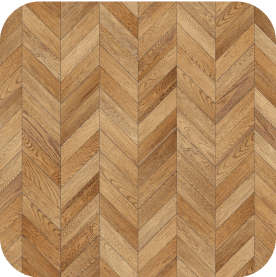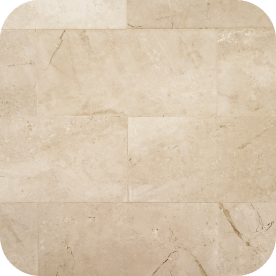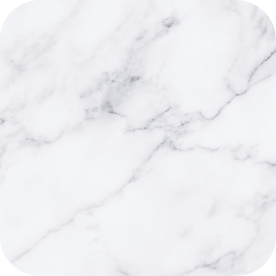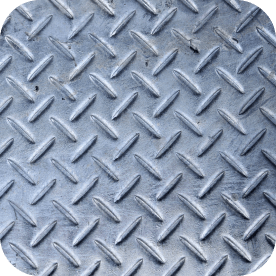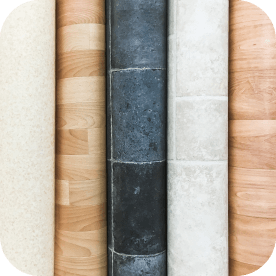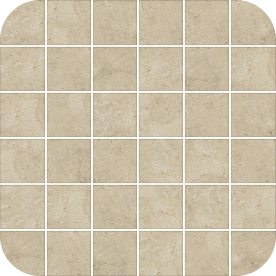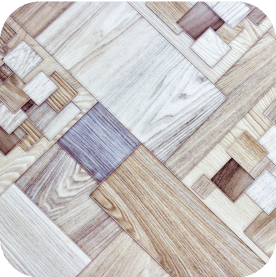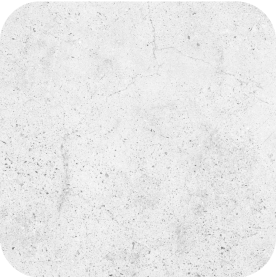Floorcare guides
How to clean a Marble floor
The ultimate guide to Cleaning and Polishing a Marble Floor
Keeping marble floors sparkling clean is easier than you think with the right techniques and equipment. As the UK's leading manufacturer of commercial floor cleaning machines, Victor Floorcare is here to help you understand everything you need to know about safely and effectively cleaning your marble floors.
Marble is a classic flooring material prized for its elegance and style, but it does require proper maintenance to retain its signature shine. In this comprehensive guide from the experts at Victor Floorcare, you'll learn insider tips on the best methods and products for polishing, sealing, and cleaning marble to reveal its inherent radiance. Discover how to banish dull spots, prevent stains, and revive the crystalline depth in your marble simply and affordably with the right floor care regimen.
What is Marble and How Is It Formed?
Before we delve any deeper, let’s take a look at the chemical history of this rock and learn why it is such a prized material.
Marble is a metamorphic rock. It is formed when limestone, and sometimes dolomite, are subject to changes in high pressure and temperature, a process that is known as metamorphosis.
Simply put, the limestone crystallizes over millions of years to form marble. Marble is also formed by contact metamorphosis near igneous rocks.
Sometimes, during the metamorphic process, impurities such as graphite, pyrite, quartz, iron oxides, mica, clay, silt, sand, chert, and serpentine are layered in between the limestone. These give marble its unique colours and veins.
Some Common Properties of Marble
Marble is a hard rock, having a hardness of 3 on the Mohs hardness scale, yet it lends itself to be shaped and sculpted easily.
Its chemical composition is calcium carbonate and it reacts with acids to neutralize them. The rock also happens to be porous, so it needs to be “sealed” before use with a chemical sealant.
However, the property that sets this rock apart is its ability to accept polish. It can be sanded with abrasives that give it a high lustre, a common reason why it is used in flooring throughout the world.
Some Common Properties of Marble
When you invest in marble floors, you will find that there are 2 options available to you—cultured marble and natural marble.
Cultured marble is man-made marble which is created from a mixture of resins and stone particles while natural marble is the metamorphic rock.
Cultured marble can be set in moulds to create bathtubs, sinks, countertops, etc. It takes a lot of labour, skill, and money to use natural marble, hence it is very expensive and must be maintained correctly.
In addition to marbles aesthetics, it’s increasingly popular due to these traits:
Allergy-proof
Once marble has been prepped, polished, and sealed for use, you do not have to worry about bacteria or allergens breeding on the floors of your home. Marble may be porous, but with a sealant, it is made safe for use even in bathrooms and kitchen counters.
Heat-resistance
This material when used in flooring is heat resistant. Marble floors remain cool even in hot summer. Also, the material is compatible with underfloor heating and cooling systems.
Longevity
Even though marble floor restoration is required to maintain the shine, the flooring need not be changed at all during the home owner’s lifetime. It truly lasts a lifetime.
Types of Marble Floor
There are 3 types of marble finishes that you are likely to enounter. It’s important to identify wether the marble is Polished, honed or tumbled before starting any floor cleaning or restoration.
Polished
Marble has the ability to take on a high polish finish. When the marble is highly polished, the flooring can become slippery if not maintained correctly. A highly polished is more likely to show any damage, scratches and blemishes very easily.
Honed
These marble tiles have been polished moderately till flat and smooth. This finish is less likely to become slipery, nor do they show blemishes readily.
Tumbled
These are the most natural-looking marble tiles. The process for tumbling marble tile involves putting the tiles into a rubber drum along with abrasive materials like rocks, sand, and water. As the drum rotates, the natural stones and sand gradually wear down the edges and surface of the marble, softening its appearance. The end result is marble tile with an authentic, rustic look complete with cracks, chips, and artfully uneven edges. Tumbled marble has an organic, natural stone aesthetic perfect for those desiring an earthy, textured finish.
Common Problems You May Face with a Marble Floor and their Solutions
Marble floors, if not maintained correctly, can become tarnished in several ways.
Susceptible to Acid Corrosion
Marble is an alkaline rock that reacts readily with acids. Hence, spills like wine, cranberry juice, fizzy drinks, and other acidic drinks can cause corrosion when spilt on marble. Treat spills immediately. Blot them with paper towels or cloth, and do not rub them in. Then wipe quickly with a dry cloth. You can buff it later.
Moreover, well-meaning people end up using the wrong chemicals to keep their floors and walls clean. These can cause scars on the surface of the marble as the marble ends up dissolving in the acidic mixture. The solution to this is to read the chemical composition of the various cleaners and verify that they are okay to use on marble.
Etches
Marble etching is the physical damage caused to the stone when it comes in contact with acidic substances. It is very different from a stain. Etching is permanent damage to the stone, which means a layer of stone is dissolved when the acid falls on it, leaving behind a slight well or dip.
Etch marks can only be treated with a marble floor polishing machine that will smoothen the unevenness, restoring the shine. Re-finishing the surface is the only cure for etching marks.
Stains
Stains run deep into the marble as marble is porous. You can have several types of stains such as oil, ink, organic, biological, metallic, water spots and filmy residue. To treat a stain, you need to draw the stain out.
- Oily stains can be treated with dish soap and cornstarch to absorb as much oil as possible. If the stain is particularly deep, you can try to use hydrogen peroxide for light marbles and acetone for dark marbles. After cleaning, use water to clean the surface and a dry towel to wipe it dry.
- To get rid of ink stains you need to immediately blot up as much of the ink as possible. Use diluted soap to clean the spill, and a towel dampened with alcohol to absorb the ink. Then you can use dilute ammonia to remove the stain.
- Organic stains can be removed by using hydrogen peroxide or diluted ammonia.
- Biological stains like mosses and lichen can be removed with hydrogen peroxide solution or acetone.
- Metallic stains are hard to remove. Since marble contains copper, iron, and bronze, these react with water and cause green or reddish brown stains. These are virtually impossible to treat.
- To get rid of watermarks or residual films you need to buff it with a soft cloth like chamois.
Efflorescence
When marble is frequently exposed to water a chalky or powdery residue can appear. This is because the salts come to the surface after the water has evaporated. The way to get rid of this is to scrub it thoroughly with water.
These were some of the common problems associated with marble floors.
How to Maintain and Restore Marble Floors?
Polishing
Opt for marble floor polishing with a rotary machine or a burnishing machine to keep the floor glossy and shining at all times. Polishing causes the thinning of marble so do not repeat this process frequently. Also, choose to work with a professional to get the job done if you are inexperienced in doing so yourself. However, with a little bit of professional help, you can certainly attempt the polishing process yourself.
Regular Cleaning
Regularly clean the marble floor with a soft cloth and avoid the use of alkaline or acidic cleaners. Choose mild cleaning products (preferably those with a neutral pH) for regular maintenance of the floors. Always flush with water once you are done with the cleaning so that no detergent stains remain on the floor. Buff and polish lightly with a soft cloth like chamois. This way your marble floors will be free from dirt and grime.
Clean up spills quickly
In case you have spilt acidic drinks on the marble, you need to quickly wipe it away to prevent the marble from staining. Blot, do not rub the stain in further. Also, flush with water so that the stains do not seep in.
Sealing floors
A floor sealant offers a protective cover on the surface of the porous marble. If you have marble floors in the bathroom or kitchen, then it is necessary to have a sealant to avoid the seepage of water into the marble causing reddish brown stains. Also, when polishing, remember a layer of sealant is likely to be removed, so you need to reapply the sealant.
Grinding
Grinding removes all the deepest stains and scratches on the marble surface. It also removes lippage which is the unevenness of the floor tiles. This process is undertaken when there are deep scratches on the floor.
Honing
The next step in the marble floor restoration is honing. Honing is a process which brings an even finish to the floor. Once, honing is done, the marble will have a matte finish, after that it can be polished to add the required gloss.
Crystallization or Buffing process
This is another method of polishing the stone floors with a chemical and a steel wool pad. The common ingredients used in crystallization are acid, magnesium, fluorosilicate and water. The chemical nature of the stone is completely altered. This process brings out the colours of the marble and is applied only after the grinding process has been completed.
How to Maintain and Restore Marble Floors?
Equipment Needed
Rotary Cleaning Machine
Victor Floorcare recommends using our high-performance rotary cleaning machines for effective dirt removal and polishing. Choose a machine with adjustable speed settings for versatility.
Commercial Vacuum Cleaner
A powerful vacuum cleaner with appropriate attachments is essential for removing loose dirt and debris before the deep cleaning process.
Microfibre Mop and Soft Bristle Brush
These tools are suitable for regular maintenance and gentle cleaning to avoid scratching the marble surface.
pH-Neutral Stone Cleaner
Victor Floorcare recommends a pH-neutral stone cleaner to prevent damage to the marble. Avoid acidic or abrasive cleaners that can erode the surface over time.
Marble Sealer
A high-quality marble sealer is crucial to protect the floor from stains and spills. Apply as per the manufacturer's instructions.
Soft, Lint-Free Cloths
Use these for wiping down the marble surface and ensuring a streak-free finish during the cleaning process.
Periodic Deep Cleaning
Preparation
Clear the area of furniture and obstacles.
Sweep or vacuum the floor to remove loose dirt.
Application of Stone Cleaner:
Dilute the pH-neutral stone cleaner as per the instructions.
Apply the solution using the rotary cleaning machine with a soft brush attachment.
Scrubbing
Use the machine to gently scrub the entire floor, paying extra attention to high-traffic areas.
Extraction:
Vacuum or mop up the dirty cleaning solution using the commercial vacuum cleaner or a clean mop.
Rinse and Dry
Rinse the floor with clean water to remove any remaining cleaner.
Dry the floor thoroughly using lint-free cloths or allow it to air dry.
Application of Marble Sealer:
Apply the marble sealer according to the manufacturer's guidelines. Ensure the floor is completely dry before sealing.
Regular Maintenance
Sweep or Vacuum
Daily removal of loose dirt prevents scratches during regular foot traffic.
Damp Mopping
Use a damp microfibre mop for routine cleaning. Avoid excessive water, as marble is sensitive to moisture.
Spot Cleaning
Quickly clean up spills to prevent staining. Use a pH-neutral cleaner for spot cleaning.
Avoid Acidic Cleaners
Do not use acidic or abrasive cleaners, as they can damage the marble surface.
Protective Measures
Place mats at entrances to reduce the risk of dirt and grit entering the premises.
Regular Inspections
Periodically inspect the floor for any damage or signs of wear.
By following these guidelines, you can maintain the longevity and beauty of your marble floors in commercial settings. For optimal results, always refer to the user manuals provided with Victor Floorcare equipment and cleaning products.
